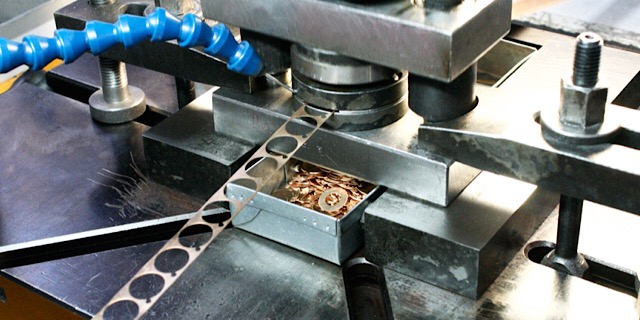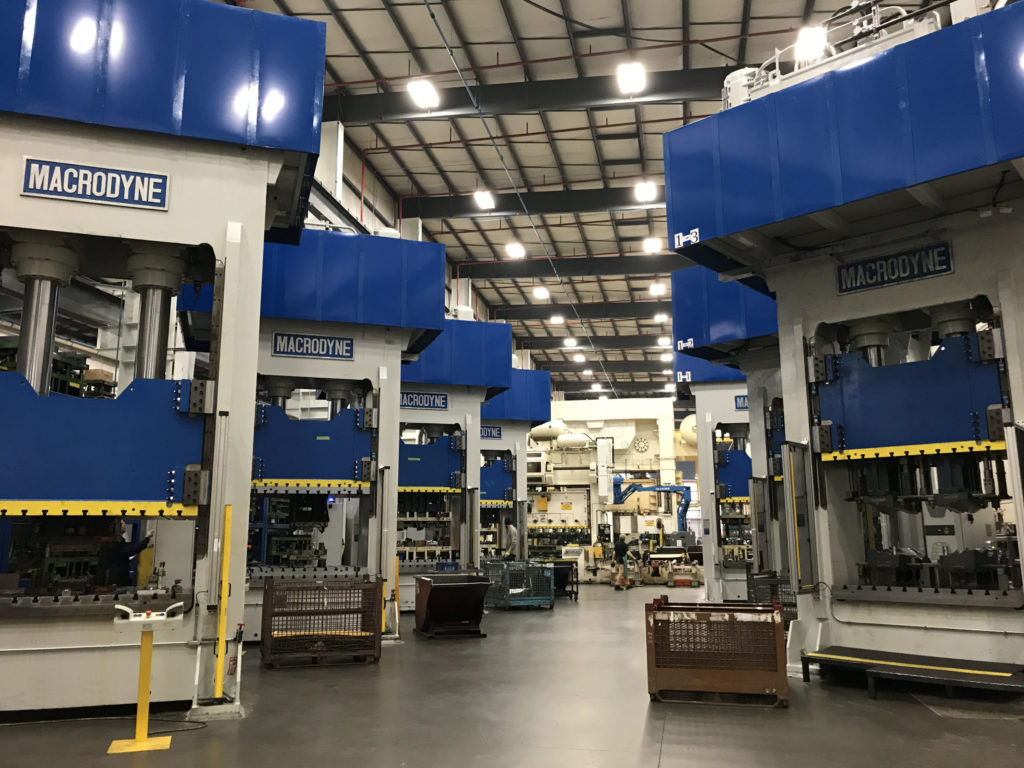The Development of Metal Stamping Modern Technology: A Comprehensive Overview
The Development of Metal Stamping Modern Technology: A Comprehensive Overview
Blog Article
Steel Stamping Developments: Elevating Production Processes for Superior Results
In the realm of producing processes, metal stamping has long been a cornerstone technique for producing a range of precision elements. With the ruthless march of technological development, the landscape of metal stamping is undergoing a significant transformation.
Evolution of Steel Marking Methods

In addition, developments in material science have actually led to the development of high-strength alloys that can now be effortlessly stamped right into elaborate forms, satisfying a broader series of commercial applications. The integration of robotics and expert system has actually even more enhanced the marking process by boosting rate and precision while decreasing the danger of human mistake.

Effect of Advanced Materials
Have innovative materials changed metal marking processes significantly in the manufacturing sector? By utilizing products such as high-strength alloys, advanced compounds, and innovative layers, steel marking processes can currently produce parts that are lighter, stronger, and a lot more durable than ever in the past.
These advanced materials supply superior mechanical properties, rust resistance, and thermal security, permitting manufacturers to meet the demands of modern-day sectors such as aerospace, automobile, and electronic devices. In addition, the usage of advanced materials in steel stamping has actually facilitated the production of complex geometries and elaborate styles that were previously unattainable with typical methods.
Furthermore, the application of innovative materials has caused reduced material waste, reduced production expenses, and shorter lead times, making steel stamping procedures much more sustainable and economical. As technology remains to advance, the impact of innovative products on steel stamping processes is anticipated to drive additional advancement and improve the competitiveness of manufacturers in the international market.
Automation in Steel Stamping
The development of metal stamping procedures driven by the combination of advanced products has actually set the stage for substantial advancements in automation within the production sector. Automation in metal stamping has actually changed manufacturing procedures, improving efficiency, accuracy, and general outcome high quality. Via the application of robotics, sensors, and computer-controlled systems, jobs that were as soon as manual and time-consuming can currently be implemented with exceptional speed and accuracy.
Automation in metal stamping not only speeds up production rates yet additionally ensures uniformity in the manufacturing procedure. By lessening human intervention, the danger of errors is dramatically lowered, causing higher degrees of product uniformity and integrity. Additionally, automation makes it possible for makers to carry out complicated marking tasks that would certainly be tough or impractical to attain manually.
Moreover, automation in steel stamping adds to a safer working atmosphere by lowering the need for workers to participate in repeated or unsafe jobs - Metal Stamping. This change in the direction of automation not just enhances performance but likewise leads the way for the future of production, where technology plays a main role in driving functional quality
Quality Control and Assessment Equipments
With a concentrate on accuracy and reliability, quality control and assessment systems play a crucial function in making sure item quality in steel marking processes. These systems are made to keep track of every stage of production, from material evaluation to the end product, to ensure that all elements satisfy the called for criteria. By carrying out innovative modern technologies such as optical examination systems, coordinate gauging equipments (CMM), and automated determining tools, makers can detect also the tiniest variances in measurements, surface area high quality, and overall integrity of stamped components.

Sustainability Practices in Metal Stamping
Building upon the foundation of accuracy and integrity established via top quality control and assessment systems, the integration of lasting methods in metal marking hop over to these guys procedures is progressively coming to be a focal point for producers seeking to lessen ecological impact and enhance resource utilization. Sustainability methods in steel stamping include a variety of campaigns intended at minimizing waste generation, power consumption, and greenhouse gas emissions throughout the manufacturing process.
One trick facet of sustainability in metal stamping is the fostering of environment-friendly products and modern technologies that promote recyclability and waste reduction. By making use of recycled materials and applying energy-efficient equipment, makers can lower their carbon impact and add to a more sustainable manufacturing cycle. Additionally, enhancing production processes to reduce material waste and power use not only benefits the atmosphere but additionally results in cost financial savings for services in the long run.
In addition, the application of sustainable practices in steel marking can improve brand credibility and interest ecologically conscious consumers. As sustainability proceeds to gain value in the production market, incorporating green initiatives right into steel stamping processes is important for long-lasting success and competitiveness out there.
Verdict
To conclude, steel marking why not look here techniques have actually significantly progressed over time, integrating innovative materials and automation to boost producing procedures. Quality assurance and evaluation systems play a crucial role in making sure exceptional results, while sustainability methods are increasingly being applied to decrease ecological effect. These innovations in metal marking have transformed the industry, leading to much more efficient and lasting production methods for numerous sectors.
Steel marking, when a manual and labor-intensive process, has changed into an extremely automated and innovative technique of forming metal sheets right into various kinds and designs.Have advanced products changed metal marking processes significantly in the production industry? By using materials such as high-strength alloys, progressed composites, and innovative coverings, metal marking processes can now generate parts that are lighter, stronger, and a lot more sturdy than ever in the past.
The evolution of metal stamping procedures driven by the assimilation of advanced products has actually set the stage for substantial advancements in automation within the see this site manufacturing industry.In conclusion, steel stamping techniques have considerably progressed over time, integrating innovative products and automation to boost making procedures.
Report this page